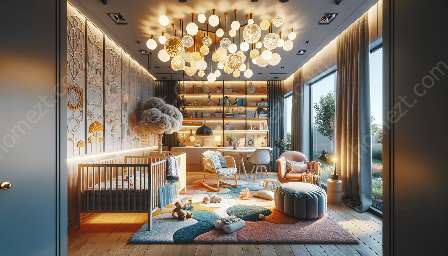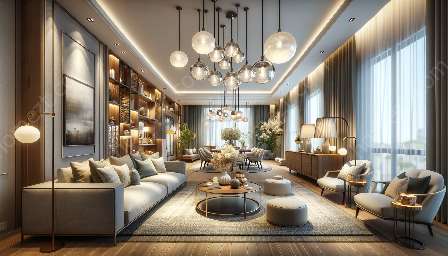Lighting design is a fundamental aspect of interior design and home furnishings, playing a critical role in creating ambiance, accentuating spaces, and enhancing functionality. A well-thought-out lighting design can transform a room, making it more inviting, comfortable, and visually appealing.
The Principles of Lighting Design
Functionality: Lighting design should address the practical needs of the space, providing adequate illumination for various activities such as reading, cooking, or relaxing. Task lighting, ambient lighting, and accent lighting are essential for creating a balanced and functional environment.
Mood and Ambiance: Lighting can set the mood and ambiance of a room, influencing how people feel and behave within the space. Warm, soft lighting can create a cozy and intimate atmosphere, while bright, cool lighting can make a room feel spacious and energizing.
Visual Interest and Accentuation: Properly designed lighting can draw attention to focal points, architectural features, or art pieces, adding depth and visual interest to the overall design. It can also be used to highlight textures, colors, and shapes within the space.
The Elements of Lighting Design
Light Fixtures: The selection of light fixtures, such as chandeliers, pendants, wall sconces, and lamps, is crucial in defining the style and character of a room. The interplay of different fixture types can create a layered and dynamic lighting scheme.
Bulb Type and Color Temperature: The type of bulbs used, including incandescent, LED, and fluorescent, as well as their color temperature, can significantly impact the overall look and feel of the space. Warm-toned bulbs can create a cozy and inviting atmosphere, while cooler tones can produce a more contemporary and energizing ambiance.
Light Control and Dimming: The ability to control the intensity of light through dimmers and smart lighting systems allows for flexibility in adapting the lighting to different activities and moods, enhancing the functionality and versatility of the space.
Functional Considerations
Task Lighting in Functional Spaces: In areas like kitchens, home offices, and reading nooks, task lighting is essential for providing focused illumination for specific activities. Under-cabinet lighting, desk lamps, and adjustable spotlights are all examples of effective task lighting solutions.
Maintaining Balance: Proper distribution of light throughout the space is crucial for achieving a harmonious and balanced environment. Layering light sources and considering the interplay between natural and artificial light can help avoid dark corners or overly bright areas.
Integration with Interior Design and Home Furnishings
When integrating lighting design with interior design and home furnishings, it's important to consider the overall aesthetic, functionality, and mood of the space. Coordinated Color Palette: The color temperature and intensity of the lighting should complement the color scheme of the room, enhancing the cohesion of the design elements. Highlighting Design Features: Lighting can be used to showcase architectural details, accentuate statement pieces of furniture, or emphasize the texture of upholstery and drapery, adding depth and drama to the design.
Scale and Proportion: The size and placement of light fixtures should harmonize with the scale and proportion of the furniture and architectural elements in the space. Oversized or undersized fixtures can disrupt the visual balance of the design.
Conclusion
Lighting design is a powerful tool in the realm of interior design and home furnishings. By understanding the principles, elements, and functional considerations of lighting design and integrating it seamlessly with the overall design scheme, one can create captivating, inviting, and functional living spaces that truly come to life after dark.



